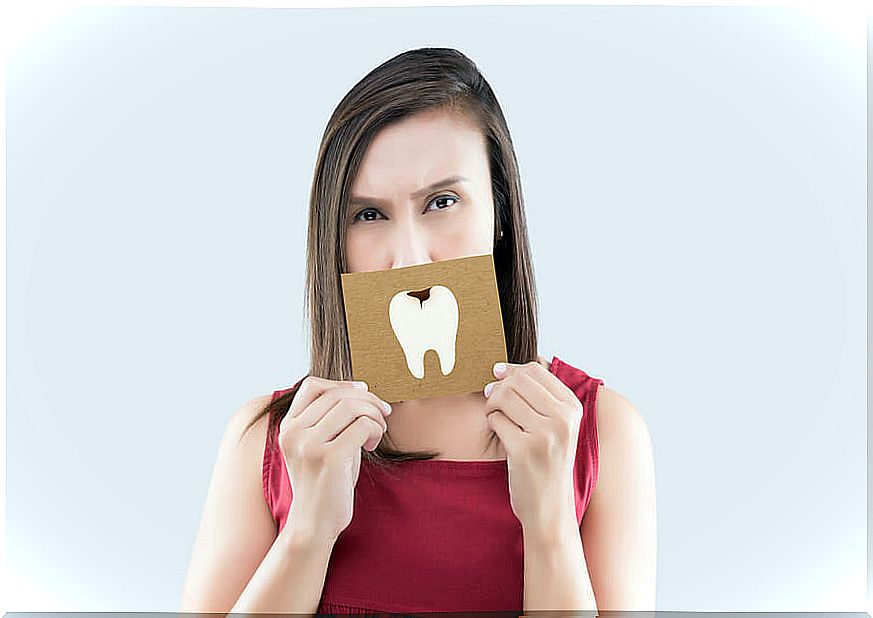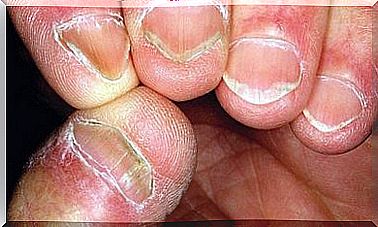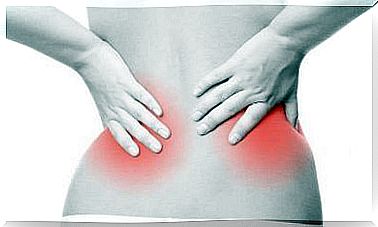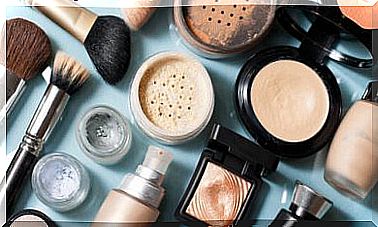Bacteria That Cause Cavities
Bacteria that cause cavities are microorganisms that organize themselves in a biofilm called dental plaque. In principle, this is seen as a white spot on the tooth, and as the decay progresses, a cavity forms, exposing the dentin.
This process includes several stages in which the bacteria that cause cavities also alternate: in each phase one of them predominates. In general, Streptococcus mutans bacteria are present at the beginning of the process , while Lactobacillus and Bifidobacterium predominate in the advanced stages .
Although we all have microorganisms in the oral cavity, bacteria that cause cavities are not present in healthy individuals. Among those who have teeth in perfect condition, the Streptococcus sanguinis species predominates .
Cavities
Caries is the destruction of dental tissues by acids produced by bacteria grouped in dental plaque. The latter is a film formed on the teeth by bacteria that cause cavities.
There are several types of cavities:
- Crown: it is the most common form and is configured on chewing surfaces. It occurs in both children and adults.
- Interdental or interproximal: it is the one that appears in the spaces between the teeth, and is not easy to detect.
- Root: occurs in adults, especially the elderly, and is due to the retraction of the gum. This exposes the root of the tooth, which does not have enamel, and can be more easily affected.
- Recurrent or secondary: are those that appear next to fillings, caps or crowns that have been placed for the treatment of other cavities.

Bacteria that cause cavities
Bacteria of the Streptococcus mutans species are the most numerous in dental plaque, with a high incidence at the beginning of caries. This type of bacteria is defined as gram positive, facultative anaerobic, and spherical. It belongs to the group of lactic acid and develops in media that have low pH.
These bacteria are transmitted from person to person and adhere to the teeth and gums, forming mounds. Frequently, and especially in deep cavities, they are accompanied by bacteria such as S. salivarius , S. parasanguinis, and S. constellatus . Its proliferation is avoided when you have good dental hygiene habits.
In some cases of caries, S. mutans is not present , but S. sobrinus , S. oralis, and S. salivarius are . When the caries is already formed, the presence of Lactobacillus of various types is common , with a predominance of L. gasseri and L. ultunensis .
Other relevant bacteria
Other bacteria that cause cavities are Actinomyces , which are particularly present in many cases of root caries. However, its role in the onset and progression of the injury is not clear. This bacterium is one of the first to colonize the oral cavity of children.
The Bifidobacterium are anaerobic bacilli grouped shaped branch, and usually present in healthy intestinal tract. The B. dentium , S. inopinata ( B. inopinatum ) and P. denticolens ( B. denticolens ) have been found in several cases, appearing when the lesion is already advanced.
The Prevotella is another anaerobic bacillus, and one of the most common in the oral cavity. It has been associated with periodontal disease and endodontic infections, but the role it plays in caries is unclear. On the other hand, Veillonella is very numerous in healthy oral cavities.

How to fight bacteria that cause cavities?
There are several factors that promote the growth of bacteria that cause cavities. The first of these is the excessive consumption of foods rich in carbohydrates, such as sugary drinks, sweets and industrial pastries. The more they are consumed, the greater the risk of developing cavities.
Other foods rich in starches, such as potatoes or bread, also promote tooth decay. It also influences the way of consuming them. It is better to eat these products only once and not to eat small pieces several times. It is also important to know how to combine them.
Good oral hygiene is key. It is advisable to brush your teeth one hour after each meal. Also, use dental floss, a fluoride mouthwash and, of course, visit the dentist twice a year.









